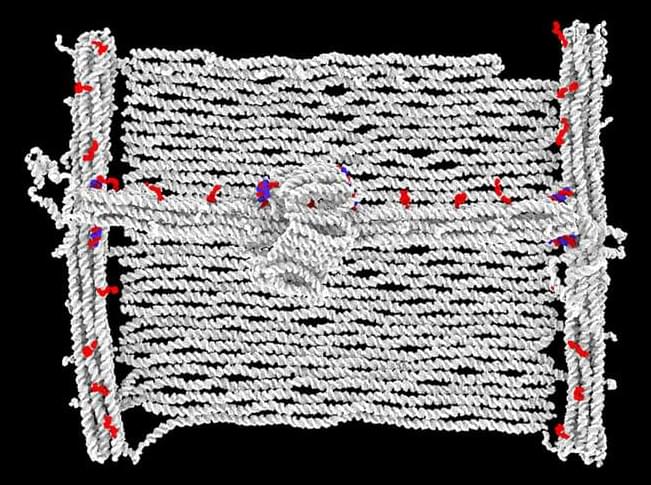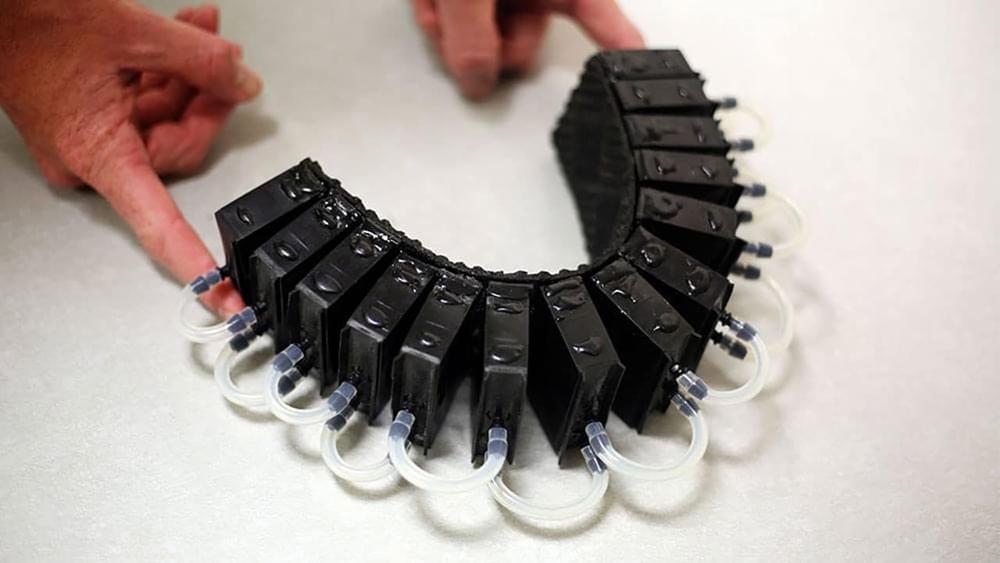
Get the latest international news and world events from around the world.



Light-based memory chip is first to permanently store data
This new innovative can lead to near infinite computation speeds without the need for complex components and it can put on a smartphone. Also it requires less hardware and weight.
Light is the most energy-efficient way of moving information. Yet, light shows one big limitation: it is difficult to store. As a matter of fact, data centers rely primarily on magnetic hard drives. However, in these hard drives, information is transferred at an energy cost that is nowadays exploding. Researchers of the Institute of Photonic Integration of the Eindhoven University of Technology (TU/e) have developed a ‘hybrid technology’ which shows the advantages of both light and magnetic hard drives.

Subscriber Edit 010 — SpaceX Starbase Driving Tour With Starlink V3 April 23 2022 | Jessica Kirsh
Jessica gives us a driving tour of SpaceX Starbase Texas with a Starlink V3 terminal strapped to the roof of the Kirsh Kona! And Anthony Gomez from Rocket Ranch also makes an appearance to give us some Starbase safety tips. Follow Anthony on Twitter @AnthonyFGomez.
https://www.rocketranchbocachica.com.
This subscriber video edit was provided by subscriber, channel member and channel moderator, Nik Lovell. Follow Nik on Twitter @nik_lovell.
Link to original live stream:
Music:
“Cosmo — Arpeggios” (Shutterstock)
Please consider supporting the channel on Patreon:
http://www.patreon.com/jessicakirsh.
Please consider joining the channel on YouTube:

Artificial Intelligence Is Already Outsmarting Humans!
Calculator is also more smart than humans but it made our life easier.
While the win over Google’s AI was impressive, more advanced developments are being made behind the scenes as well. The integration of multiple AIs, called neural networks, has led to computers with unique personalities and quirks that were previously only seen in humans.
AI is already outsmarting humans
When we talk about artificial intelligence (AI), our minds often turn to visions of a robot uprising, sentient computers, and other science-fiction fantasies. As it turns out, though, AI has already started doing some pretty impressive things in real life: Researchers at Google just announced that their AI was able to beat one of mankind’s best players at Go—an ancient Chinese game so complex that a computer had never beaten a human master. The victory was significant for more than one reason: first, it shows that AlphaGo can already outsmart humans; second, it suggests there’s real potential for AI in solving problems we haven’t been able to solve before.

Robotic actuators could make spacesuits more comfortable and safer
“Pressure and mobility have an inverse relationship,” Diaz Artiles said. “The more pressure you have in the spacesuit, the lower the mobility. The less pressure you have, the easier it is to move around.”
“Imagine wearing really tight Under Armour or really tight leggings. That pressure pushing down on your body would be in replace of or in addition to gas pressure,” Kluis said. “So the idea with the SmartSuit is that it would use both mechanical pressure and gas pressure.”
Diaz Artiles and her team continue to work on the SmartSuit architecture, and the actuator prototypes are a promising development in creating a more accommodating and resourceful spacesuit for future planetary missions. Their end goal would be for it to feel like the wearer is moving without the spacesuit on and without breaking too much of a sweat.

MIT wants to use a rock-vaporizing drill to cut 12 miles into Earth’s crust
MIT spinoff Quaise Energy is building a drill that vaporizes rock — so that we can tap into the energy miles below our feet.
Geothermal energy: Earth’s core is as hot as the surface of the sun, but we don’t have to go too far below the surface to start feeling the heat — in the Mponeng gold mine in South Africa, which has a depth of 2.5 miles, rock temperatures can reach 140 degrees Fahrenheit.
Geothermal power generates electricity from this natural heat, and there’s enough of it to meet the energy needs of the entire world — if you can get to it.
Solar 3.0: This New Technology Could Change Everything
Perovskite solar cells might revolutionize how humans generate energy from sunlight.
https://brilliant.org/ElectricFuture.
First 200 people get 20% off annual premium subscription.
In this video we’ll explore the world’s fastest improving new solar technology, and provide an exclusive peek inside the lab of a team working on this breakthrough material.
Imagine an inexpensive solution of perovskite crystals that can make a photovoltaic cell so thin, that just half a cup of liquid would be enough to power a house. A solar panel so lightweight, that it can be balanced atop a soap bubble. That is known as the holy grail of solar energy. So when will we see perovskite solar panels used for a solar power system for your home? Maybe sooner than you expect.
Currently, only 2% of global electricity comes from solar power. And 90% of that, comes from crystalline silicon-based solar panels, the dominant material technology.
While abundant, silicon has downsides related to efficiency, manufacturing complexity, and pollution that prevent it from being an absolute no brainer. Emerging thin films like perovskites present a bright future. Imagine solar cars like a solar tesla, solar yachts, or a solar plane.
Solar cell technologies can be classified into two categories, wafer-based or thin-film cells. Perovskites are the leading contender in emerging thin films. Topics covered in this video include applications, perovskite crystal structure, working principle of perovskite solar cells, efficiency limits, multi-junction solar cells, shockley-queisser limit, how solar works, solar simulator, band gap, manufacturing, vapor deposition, how solar panels are made, and the future of solar power.